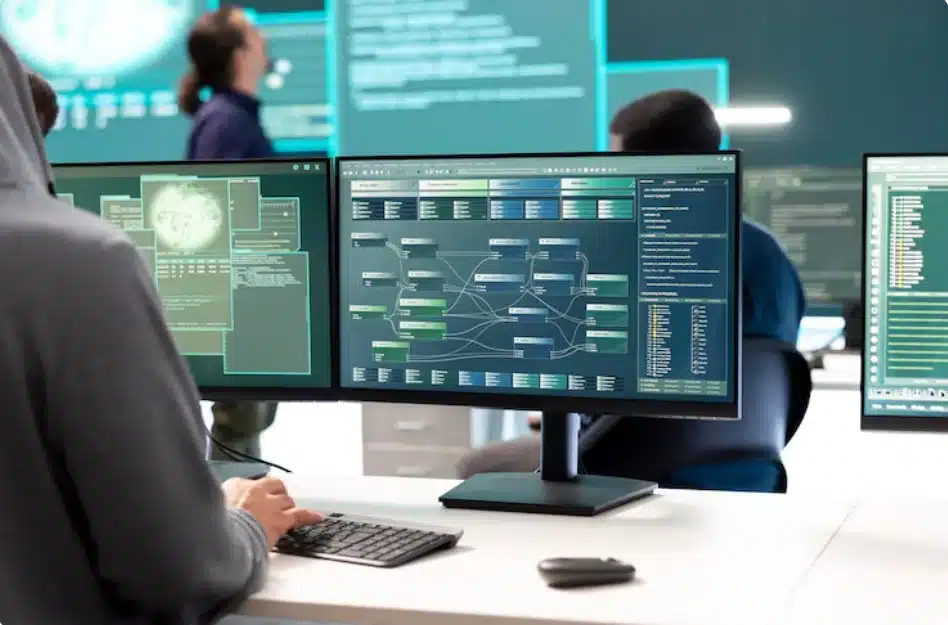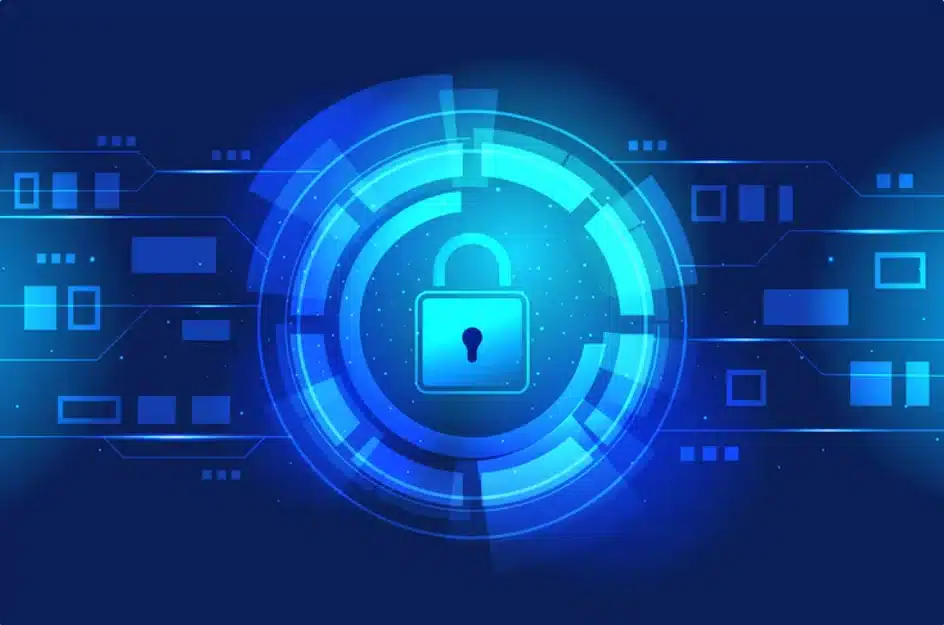Cyber threats have become so sophisticated that detecting them requires more than just installing antivirus software and hoping for the best. Modern attacks span multiple systems, unfold over days or weeks, and often use legitimate credentials and tools to avoid detection. Security teams need technology that can connect the dots across thousands of events happening simultaneously throughout their infrastructure.
These platforms serve as the analytical brain of security operations, collecting massive amounts of data from across your technology environment and applying intelligence to identify genuine threats amid the noise.
What Security Information and Event Management Tools Do
At their core, security information and event management tools aggregate security data from every source in your technology environment—firewalls, servers, endpoints, applications, cloud platforms, and other security tools. They normalize this data into consistent formats, correlate related events, apply detection rules and analytics, and alert security teams when they identify potential threats.
Think of a security information and event management tool as the difference between having security cameras throughout a building versus having cameras with a monitoring system that alerts guards when suspicious activity occurs. The cameras (your individual security tools) capture what’s happening, but the monitoring system (SIEM) analyzes all those feeds simultaneously to identify problems that need attention.
Core Threat Detection Capabilities
Log Aggregation and Normalization
The foundation of threat detection is comprehensive data collection. Security information and event management tools collect logs and events from hundreds or thousands of sources throughout your infrastructure. A large enterprise might generate tens of millions of log entries daily from firewalls, authentication systems, databases, applications, cloud services, and countless other systems.
Raw log data comes in different formats from different vendors. One system logs failed logins as “authentication failure,” another as “invalid credentials,” and a third as “logon denied.” These tools normalize disparate data into consistent formats so events from different sources can be compared and analyzed together. This normalization is tedious but essential work that enables effective correlation.
Real-Time Event Correlation
The most valuable capability of security information and event management tools is correlating related events to reveal attack patterns. Individual events might seem harmless, but when correlated with other activities, they clearly indicate attacks.
Consider this scenario: A user fails to authenticate to a VPN three times, then successfully logs in. Thirty seconds later, that account accesses a file server it never touched before and downloads 500 megabytes of data. Each event individually might not trigger alerts, but the pattern—failed login attempts followed by unusual access and large data transfer—clearly suggests a compromised account and potential data theft.
Behavioral Analytics
Modern security information and event management tools use behavioral analytics to establish baselines of normal activity, then alert on significant deviations. The system learns that specific users typically log in from certain locations during business hours, access particular systems, and generate predictable network patterns.
When behavior deviates from these norms—logins from unusual locations, access to systems outside normal patterns, or data transfers at atypical times—the tool flags these anomalies for investigation. This behavioral approach catches threats that signature-based detection misses, particularly attacks using stolen credentials and legitimate administrative tools.
Threat Intelligence Integration
Leading platforms integrate threat intelligence feeds, providing indicators of compromise from recent attacks worldwide. When your systems communicate with known malicious IP addresses, download files matching malware signatures, or exhibit behaviors consistent with documented attack campaigns, threat intelligence provides immediate context.
This integration means your organization benefits from collective security knowledge rather than having to discover every threat independently. Threat intelligence dramatically improves detection speed and accuracy.
Advanced Detection Techniques
User and Entity Behavior Analytics (UEBA)
Advanced security information and event management tools incorporate UEBA capabilities that use machine learning to understand normal behavior patterns for users, systems, and applications. Unlike rule-based detection that looks for specific patterns, UEBA identifies anomalies without knowing exactly what they’re looking for.
UEBA is particularly effective at detecting insider threats, compromised accounts, and advanced persistent threats that use valid credentials and move slowly to avoid triggering traditional alerts. The system learns what normal looks like for each entity, then flags significant deviations that warrant investigation.
Threat Hunting Support
Beyond reactive alerting, these tools support proactive threat hunting where analysts actively search for indicators of hidden threats. Security information and event management tools provide the query capabilities, data visualization, and investigation features that hunters need to find sophisticated attackers who’ve evaded automated detection.
Threat hunting typically involves hypothesis-driven investigation—”What if attackers compromised an admin account? What would that look like in our data?”—followed by analysis to confirm or disprove the hypothesis. The tool provides the data access and analytical capabilities that make hunting practical.
Multi-Stage Attack Detection
Sophisticated attacks unfold in stages: reconnaissance, initial compromise, privilege escalation, lateral movement, and objective execution. Each stage might involve different systems and occur days or weeks apart.
Security information and event management tools maintain correlation context over extended periods, tracking the progression of attacks across these stages even when significant time passes between activities.
This long-term correlation reveals patient attackers who move slowly precisely to avoid detection systems looking for rapid sequences of malicious activities.
Evaluating Security Information and Event Management Tools
Key Selection Criteria
When conducting a security information and event management tools comparison, several factors distinguish effective solutions from those that will frustrate your team:
- Data Collection Capabilities: Can it integrate with your specific security tools, applications, cloud platforms, and infrastructure? Comprehensive visibility depends on collecting data from every relevant source.
- Correlation Engine Power: How sophisticated is the correlation logic? Can it connect events across long time periods? Does it support complex multi-condition rules?
- Scalability: Can it handle your data volumes today and as you grow? Some tools struggle when log volumes exceed certain thresholds, leading to performance problems or data loss.
- Analytics and Reporting: Does it provide the investigation tools, visualizations, and reports your analysts need? User experience directly impacts analyst productivity and effectiveness.
- Threat Intelligence Integration: What intelligence feeds does it support? How seamlessly does intelligence integrate into detection workflows?
- Automation Capabilities: Can it automate routine investigation tasks and response actions? Automation is increasingly necessary to handle alert volumes effectively.
Deployment Considerations
Security information and event management tools can be deployed on-premises, in the cloud, or as a hybrid. Cloud-based solutions offer faster deployment, eliminate infrastructure management, and provide elastic scalability. On-premises deployments offer complete control and may be required for regulatory reasons in some industries.
Consider your team’s capabilities honestly. A powerful security information and event management tool is useless if your team lacks the skills to operate it effectively. Some solutions require deep technical expertise, while others prioritize usability for security teams with varied skill levels.
The Impact on Security Operations
Improved Detection Speed and Accuracy
Organizations using security information and event management tools consistently detect threats faster than those relying on individual security tools and manual analysis. Automated correlation and alerting identify attacks in minutes or hours rather than days or weeks. This speed reduction dramatically limits what attackers can accomplish before being detected and contained.
Detection accuracy also improves significantly. By correlating events and applying behavioral analytics, these tools distinguish genuine threats from benign activities more effectively than analysts reviewing alerts from individual tools. This accuracy reduction in false positives means security teams spend time investigating real threats rather than chasing phantom problems.
Enhanced Forensic Investigation
When security incidents occur, investigators need to understand exactly what happened, how attackers got in, what they accessed, and whether they’re still present. Security information and event management tools provide the comprehensive data and investigation capabilities necessary for thorough forensics.
Analysts can query historical data, trace attacker activities backward to identify initial compromise vectors, follow attack paths forward to see all affected systems, and determine what data might have been accessed or stolen. This forensic capability is nearly impossible without centralized logging and powerful query tools.
Compliance and Audit Support
Many regulations require security monitoring, incident detection capabilities, and log retention. PCI-DSS, HIPAA, SOX, GDPR, and other frameworks mandate capabilities that security information and event management tools provide. These platforms help organizations demonstrate compliance through automated reporting and documented evidence of security controls.
The audit trail capabilities ensure every security event is logged and retained for required periods, providing verifiable evidence of monitoring and incident response activities.
The Foundation of Modern Security
Security information and event management tools have become foundational technology for security operations because they solve a fundamental problem—there’s too much security data for humans to analyze manually.
By aggregating data from across the environment, correlating related events, applying behavioral analytics, and integrating threat intelligence, these platforms reveal threats that would otherwise remain hidden in the noise.
The investment in quality security information and event management tools pays dividends through faster threat detection, more effective investigations, and demonstrated compliance with security requirements.
As threats grow more sophisticated and IT environments become increasingly complex, these capabilities become increasingly necessary for organizations serious about protecting their digital assets.


